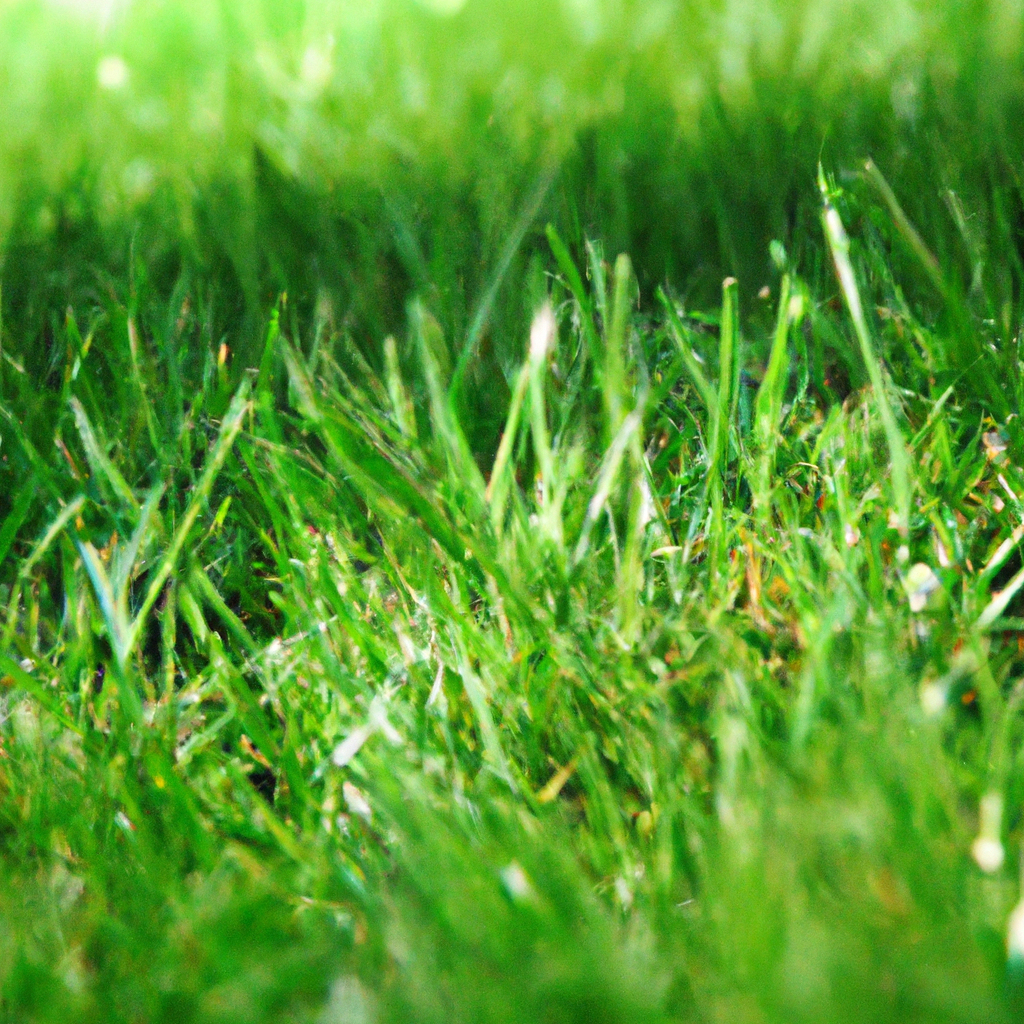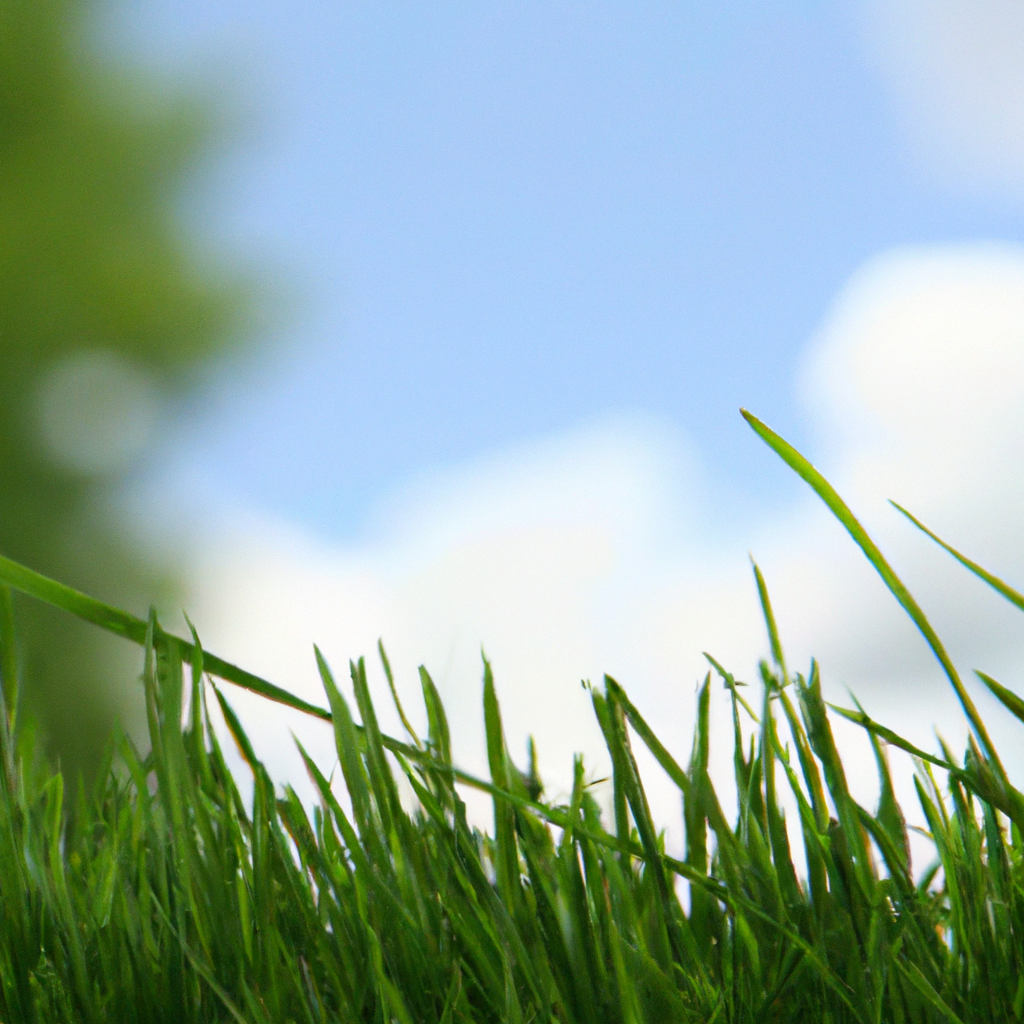In this captivating guide, you will discover invaluable tips and tricks to help you grow fast grass effortlessly. Whether you’re looking to transform your dull lawn into a green oasis or simply want to impress your neighbors with a luscious carpet-like lawn, this comprehensive guide has got you covered. From choosing the right grass seed to implementing proper watering techniques, you’ll learn all the secrets to achieving a vibrant and flourishing lawn in no time. Get ready to unleash your inner green thumb and prepare to be amazed by the results!

Choosing the Right Grass Type
When it comes to choosing the right grass type for your lawn, it’s important to consider factors such as climate, sunlight, and soil type. Different grass types thrive in different environments, so finding the one that suits your needs is essential for a healthy and vibrant lawn.
Determining Your Climate
The first step in choosing the right grass type is to determine your climate. This will help you select a grass variety that can withstand the temperatures and weather conditions in your region. Are you in a cold climate? A warm climate? Or perhaps somewhere in between? Understanding the climate will help you narrow down your options and choose a grass type that can thrive in your specific conditions.
Considering Sun and Shade
Another crucial factor to consider when choosing grass is the amount of sunlight your lawn receives. Is it mostly sunny, partially shaded, or heavily shaded? Different grass types have varying sunlight requirements, so it’s important to select a variety that can thrive in the amount of sunlight available in your yard. If you have areas of heavy shade, there are grass varieties specifically designed to tolerate low light conditions.
Identifying Your Soil Type
Lastly, you need to identify your soil type. Is it sandy, loamy, clayey, or a combination? Different grass types have different soil preferences, so understanding your soil type will help you select a variety that can grow well in your specific soil conditions. If you’re unsure about your soil type, you can perform a simple soil test or consult with a professional to determine the best grass type for your soil.
Preparing the Soil
Before you can start growing fast grass, it’s crucial to prepare the soil properly. This ensures that the grass roots have a conducive environment to establish and grow.
Clearing the Area
The first step in preparing the soil is to clear the area of any existing vegetation or debris. This includes removing any weeds, shrubs, or rocks that may hinder the growth of your grass. Clearing the area will provide a clean slate for your new lawn to thrive.
Loosening the Soil
Once the area is clear, the next step is to loosen the soil. This can be done by using a garden tiller or a garden fork to break up any compacted soil. Loosening the soil improves drainage, allows better root penetration, and promotes the overall health of the grass.
Removing Weeds and Debris
After loosening the soil, it’s important to remove any remaining weeds or debris. Weeds can compete with your grass for nutrients and water, so eliminating them before planting will give your grass the best chance to grow successfully. Removing debris such as rocks or roots will also contribute to a more even surface and prevent potential obstacles for your lawn mower.
Providing Adequate Nutrients
To ensure your fast grass grows healthy and strong, it’s essential to provide it with the right nutrients.
Conducting a Soil Test
Before applying any fertilizers or amendments, it’s recommended to conduct a soil test. A soil test will give you valuable insight into the current nutrient levels of your soil, helping you determine the best course of action. You can purchase a soil testing kit or consult with a local extension service or professional for assistance.
Applying Fertilizer
Based on the results of your soil test, you can choose the appropriate fertilizer for your grass type and soil conditions. Fertilizers contain essential nutrients like nitrogen, phosphorus, and potassium, which are necessary for healthy grass growth. Follow the instructions on the fertilizer package to ensure proper application, taking care not to over-fertilize, as this can harm the grass.
Using Organic Amendments
In addition to fertilizers, using organic amendments can improve the overall health of your soil and provide long-term benefits for your grass. Organic materials such as compost, grass clippings, or aged manure can enhance soil structure, increase nutrient availability, and improve moisture retention. Incorporating these amendments into the soil before seeding or sodding will create a fertile bed for your fast grass to flourish.
Seeding or Sodding
Once the soil is properly prepared, it’s time to choose between seeding or sodding to establish your fast grass lawn.
Choosing Between Seed and Sod
Seeding and sodding are two common methods of establishing a new lawn. Seeding involves spreading grass seeds over the prepared soil, while sodding involves laying pre-grown grass sod onto the soil. Each method has its advantages and considerations, so it’s important to weigh the pros and cons and choose the option that best suits your needs, budget, and desired timeline.
Preparing the Seed or Sod
If you choose to seed your lawn, make sure to select a high-quality grass seed that’s suitable for your climate, sunlight, and soil conditions. Prepare the seed by mixing it with a suitable carrier such as sand or compost, as this will help distribute the seeds evenly. If you opt for sod, ensure that the sod rolls are fresh, healthy, and free from weeds or diseases.
Applying the Seed or Sod
When it’s time to apply the seed or sod, spread it evenly over the prepared soil. For seeding, use a broadcast spreader or a hand spreader to achieve a uniform coverage. Press the seeds lightly into the soil to ensure good seed-to-soil contact. If sodding, start by laying the sod rolls tightly against each other, avoiding any overlapping or gaps. Press the sod firmly into the soil to eliminate air pockets.

Watering Techniques
Proper watering is crucial for the establishment and growth of your fast grass.
Establishing an Irrigation System
To ensure consistent and efficient watering, consider establishing an irrigation system for your lawn. This can be as simple as using sprinklers attached to hoses or as advanced as installing an automated underground sprinkler system. An irrigation system will help distribute the water evenly and reduce the chances of overwatering or underwatering.
Watering Frequency and Duration
When it comes to watering your fast grass, it’s important to strike the right balance. Aim to water deeply and infrequently, allowing the water to penetrate the soil and encourage deep root growth. Watering too frequently or for short durations can lead to shallow rooting and weak grass. The frequency and duration of watering will depend on the grass type, climate, and soil conditions, so monitor your lawn’s moisture levels and adjust accordingly.
Avoiding Overwatering or Underwatering
Overwatering or underwatering can have detrimental effects on the health of your grass. Overwatering can lead to shallow rooting, excessive thatch buildup, and increased susceptibility to pests and diseases. On the other hand, underwatering can cause dehydration, browning, and stunted growth. Pay attention to your lawn’s needs, keeping an eye out for signs of overwatering or underwatering, such as soggy soil or wilting grass, and adjust your watering accordingly.
Mowing and Trimming
Proper mowing and trimming practices are essential for a well-maintained and attractive lawn.
Choosing the Right Mower
Selecting the right mower for your fast grass is crucial to achieve optimal results. Consider factors such as the size of your lawn, the terrain, and your personal preference. Options include walk-behind mowers, self-propelled mowers, or riding mowers. Ensure that your mower is in good working condition, with sharp blades and proper cutting height adjustments.
Setting the Mowing Height
Setting the mowing height correctly is important for maintaining healthy grass. Different grass types have different recommended mowing heights, so it’s essential to know the specific requirements for your chosen grass variety. Typically, mowing at a higher height encourages deeper root growth and helps shade out weeds. Avoid cutting more than one-third of the grass blade length at a time to prevent stress and scalping.
Maintaining Blades and Equipment
Regular maintenance of your mower blades and equipment is necessary for optimal performance. Dull blades can tear the grass instead of cleanly cutting it, leading to unnecessary stress and potential disease entry points. Sharpen your mower blades regularly and keep your equipment clean and well-maintained. Additionally, ensure that the mower deck is set to the appropriate height to avoid unnecessary damage to the grass.

Dealing with Common Problems
Maintaining a healthy lawn requires addressing common problems such as pests, diseases, and other grass issues.
Identifying Pests and Diseases
Regularly inspect your lawn for signs of pests and diseases. Common pests include grubs, armyworms, and chinch bugs, while diseases like brown patch and dollar spot can affect the grass. Learn to recognize the symptoms, such as discoloration, thinning, or irregular patches, and promptly take action to prevent further damage.
Implementing Pest Control Measures
If pests are causing damage to your fast grass, it’s important to implement appropriate pest control measures. This can include using insecticides or beneficial nematodes, introducing natural predators, or employing cultural practices to discourage pests. Consider using environmentally friendly and safe methods whenever possible to minimize the impact on the ecosystem.
Treating Common Grass Issues
Grass issues such as thinning, yellowing, or weed invasion can occur even with proper care. If you notice such issues, take prompt action to address them. This may involve overseeding to fill in bare patches, adjusting your lawn care practices, or using targeted weed control methods. Keeping a vigilant eye on your lawn’s health and addressing any issues will help maintain its vibrancy and beauty.
Regular Maintenance
Maintaining your fast grass requires ongoing care and attention to keep it in peak condition.
Aerating the Soil
Regularly aerating your lawn can help alleviate soil compaction and promote better air and water circulation to the grass roots. This can be done using a core aerator that removes small plugs of soil, or by using a spike aerator that creates holes in the soil. Aerate your lawn once or twice a year, preferably during the growing season, for optimal results.
Overseeding as Required
Over time, your fast grass may experience thinning or bare spots. To address these issues, overseeding can be done to introduce new grass seeds to those areas. Choose a high-quality grass seed blend that matches your existing grass variety and follow the recommended seeding rates. Ensure good seed-to-soil contact and provide adequate water during the germination period to help the new grass establish.
Using Weed Control Methods
Weeds can be persistent and can quickly overtake your fast grass if not properly managed. Implementing effective weed control methods is necessary to maintain a lush and weed-free lawn. This can involve manual removal, spot treatments with herbicides, or using pre-emergent herbicides to prevent weed seeds from germinating. Choose the method that suits your preferences and be consistent in your weed control efforts.

Protecting and Enhancing Growth
To protect and enhance the growth of your fast grass, consider additional measures that can contribute to a healthier lawn.
Applying Mulch or Compost
Applying a layer of organic mulch or compost around your grass can benefit its growth and overall health. Mulch helps retain moisture, reduces weed growth, and enriches the soil as it breaks down over time. Compost provides essential nutrients, improves soil structure, and enhances microbial activity. Spread a thin layer around your grass, taking care not to cover the grass blades.
Limiting Foot Traffic
Excessive foot traffic can compact the soil and put stress on your fast grass. To prevent damage, limit foot traffic as much as possible, especially during times of stress such as dry periods or after heavy rainfall. If certain areas of your lawn experience high foot traffic, consider installing designated walkways or stepping stones to protect the grass.
Ensuring Proper Drainage
Good drainage is essential for healthy grass growth. Poor drainage can lead to waterlogging, which can suffocate the roots and cause the grass to decline. Ensure that your lawn has proper drainage by fixing any areas of standing water or grading issues. Consider incorporating drainage solutions such as French drains or permeable pavers if necessary.
Monitoring and Troubleshooting
Regular monitoring and troubleshooting are key to maintaining a healthy and thriving fast grass lawn.
Regularly Inspecting the Lawn
Make it a habit to regularly inspect your lawn for any signs of problems. Walk the entire area, paying attention to changes in color, texture, or growth patterns. Look for signs of pest or disease infestations, weed intrusion, or any other issues. Early detection can help you address problems more effectively and prevent widespread damage.
Identifying and Addressing Issues
If you notice any issues during your inspections, take immediate action to address them. Determine the underlying cause and implement appropriate measures to rectify the problem. This may involve adjusting your watering or fertilizing practices, treating pests or diseases, or making necessary changes to your lawn care routine.
Seeking Professional Help if Needed
If you encounter persistent or particularly challenging issues with your fast grass, don’t hesitate to seek professional help. Lawn care experts or specialists can provide valuable advice, conduct more detailed assessments, and offer recommended solutions tailored to your specific needs. Their expertise and experience can save you time, effort, and potential harm to your lawn.
Growing fast grass requires knowledge, patience, and consistent care. By following these tips and tricks outlined in the Ultimate Guide to Growing Fast Grass, you’ll be well on your way to achieving a vibrant and thriving lawn that you can enjoy for years to come. Happy growing!

